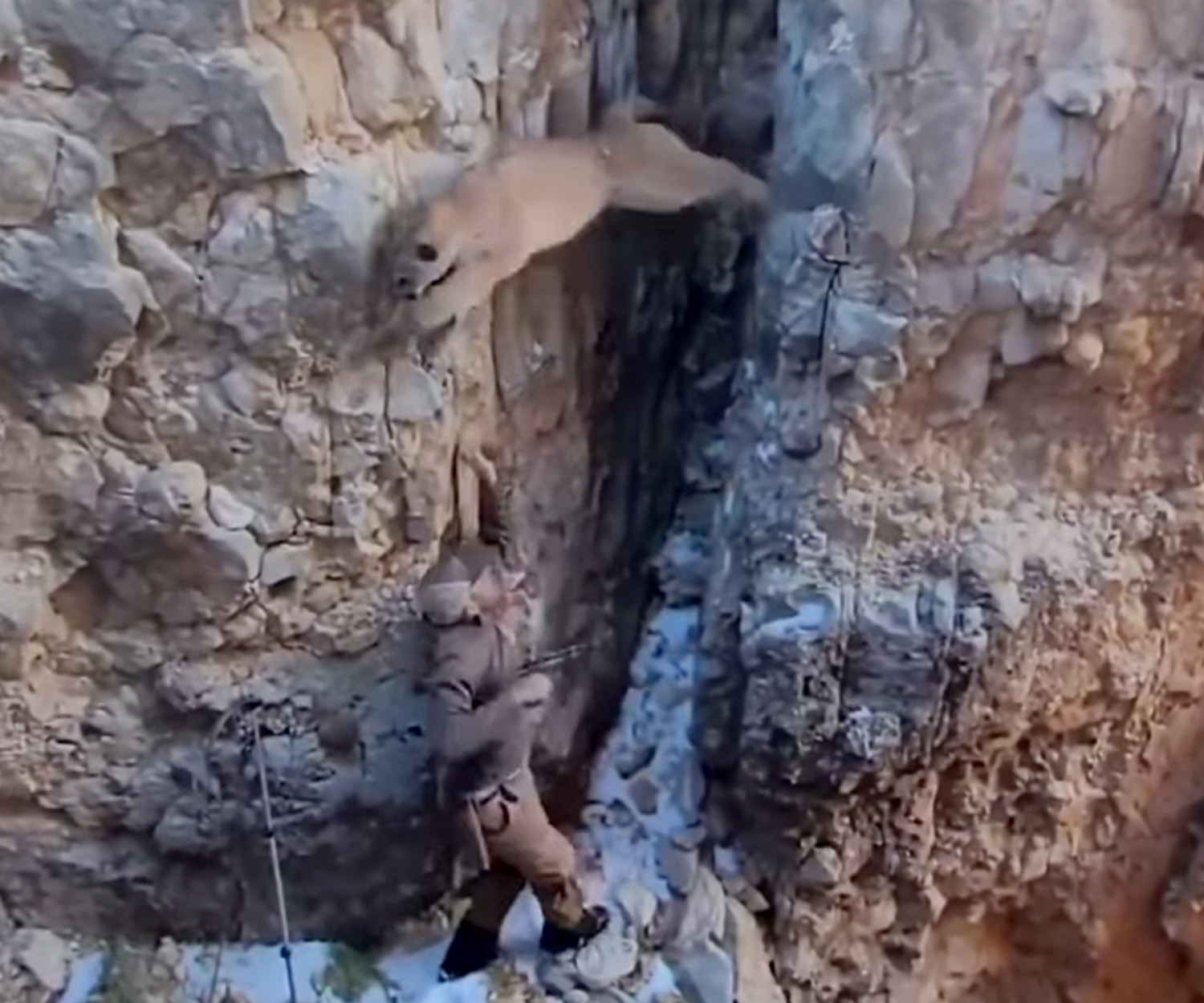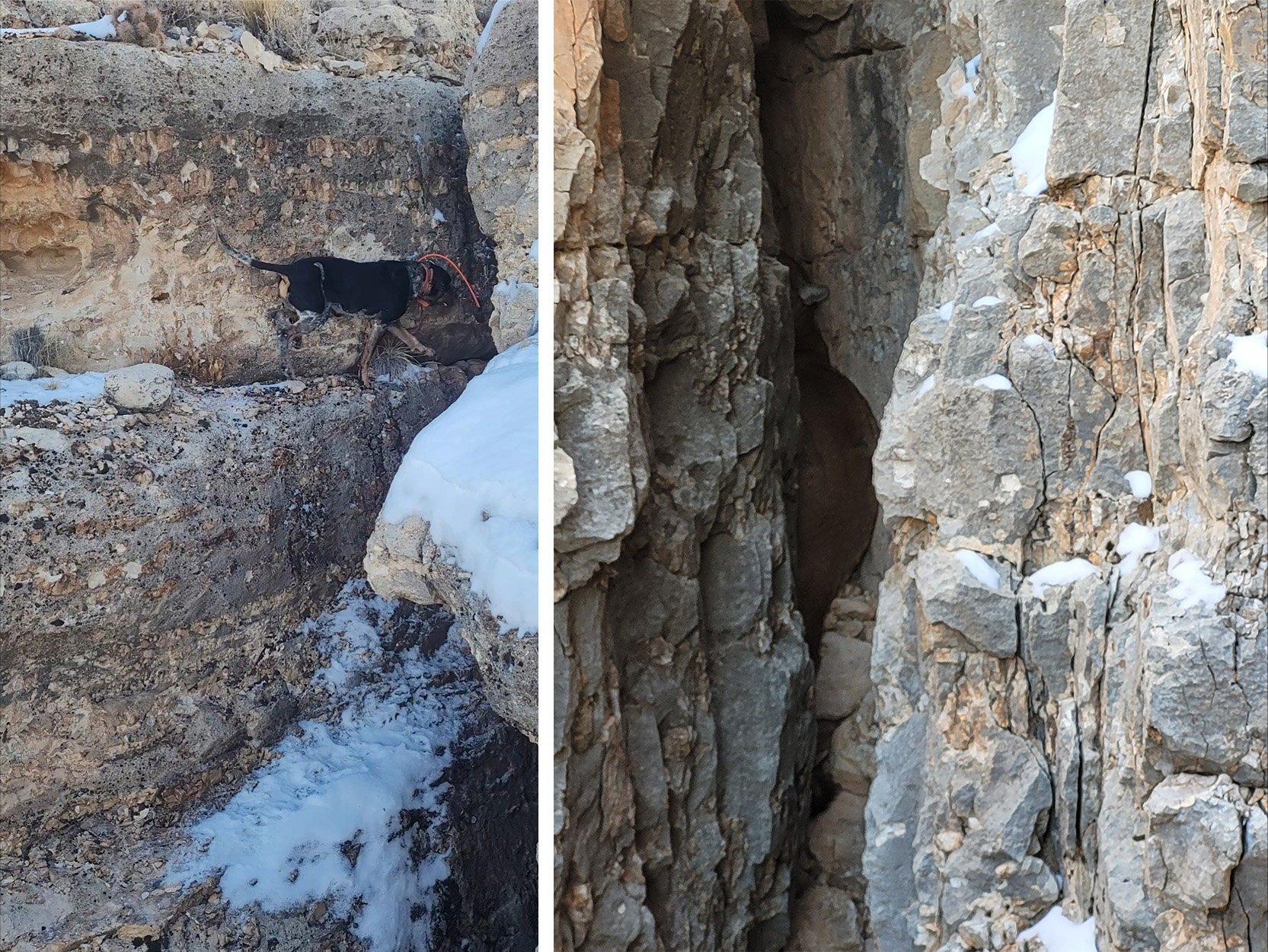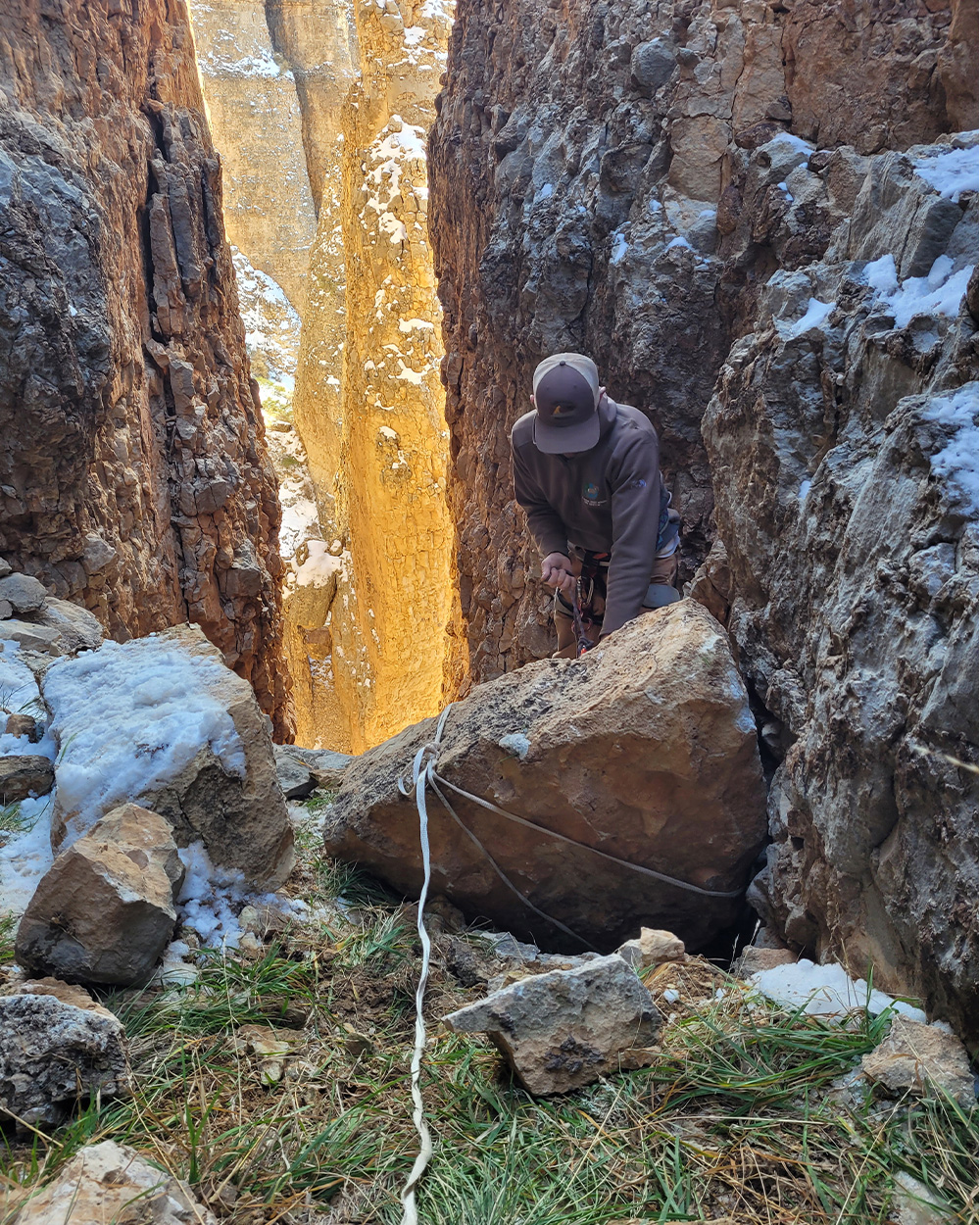The intense footage from Arizona shows how lion hunters and wildlife biologists often work together to catch and collar mountain lions

The wildlife biologist looks up as the darted mountain lion jumps over his head. Photograph courtesy Travis Legler
Wildlife biologists get paid to work in close quarters with the animals they study, but sometimes those critters get a little too close for comfort. Such was the case in January, when a biologist with the Arizona Game and Fish Department nearly got pounced on by a mountain lion after shooting the cat with a tranquilizer dart.
Travis Legler, the volunteer houndsman who was helping the biologist that day, captured the whole episode on video and uploaded it to his YouTube channel that evening, Jan. 12. It’s a nail-biter of a clip that shows the wildlife biologist standing his ground in a tight canyon as the large female cougar runs circles around him. By the end of the video, it’s hard to say which is more impressive: the lion’s athleticism or the biologist’s lack of fear.
A part-time hunting guide and full-time dog trainer, Legler occasionally works with fish and game agencies in Utah and Arizona to help them catch cougars and black bears for research. He tells Outdoor Life that the Jan. 12 encounter he recorded on video was one of the more unusual (and intense) encounters he’s ever been a part of. At one point during the clip, you can hear Legler roaring at the cougar from behind the camera as the cat tries climb out of the slot canyon. He did this to scare the cat, but also to save his own skin.
“You can’t see it in the video, but I was standing on a 2-foot by 2-foot ledge with a 150-foot cliff behind me,” says Legler, who operates Tmans Hunting and lives near the border of Arizona and Utah. “So, if the cat hit me, me and the cat were both going off the cliff.”
Finding a Cougar and Following It Down
Legler explains that Jan. 12 started out as just another training day. He hiked into Kaibab National Forest in Arizona with a few hounds, and soon enough they were on the trail of a mountain lion. They followed the female lion into a steep, rocky gorge, where it climbed down into an even smaller slot canyon and settled in among the rocks.
Later that morning, after he’d caught the cougar, Legler got a message on his handheld GPS from a wildlife biologist who works with AZGFD. (Legler is on a list of volunteer houndsmen in the Southwest, who help wildlife biologists catch mountain lions so they can be fitted with GPS collars.)
“He asked me how I was doing because he knew I was out that day,” Legler says. “And I told him ‘Good, I’ve already got one caught.’ He asked if I would mind if we went back and collared it and I said no.”
By the time Legler and the biologist returned to the slot canyon where Legler’s dogs had trapped the cougar, the cat hadn’t budged. So, after Legler walked back to his truck to put his dogs away — mainly to keep them from hurting themselves — the two men climbed down into the slot canyon and got into position.

“I could hear it, you know, growling at me when I first got there,” Legler says. “And once he got down in there where he felt like it wasn’t going to go anywhere, he had me move over to the other side [of the slot canyon] to where I was standing when I filmed.”
Darting, Dodging, and Collaring the Cat
The wildlife biologist then shot the female mountain lion with a tranquilizer dart. But instead of going right to sleep, which Legler says usually happens in these scenarios, the cat roared and bounded down from its perch as it tried to escape. (Legler prefaces this by explaining that most of his experiences have been with mountain lions that are treed and not cornered in a canyon.)
“Usually these drugs [have] a pretty good effect, and the way were set up, we figured she would fall asleep there,” Legler says. “But she made up her own mind for us and that all changed.”

He explains that after the wildlife biologist had his close brush with the mountain lion, the cat jumped down another 50 to 60 feet, where it finally fell asleep on a lower ledge. Legler then helped the biologist rappel down, where he was able to take some samples and get a collar on the cat. He gave the cat a reversal drug to wake it up, and then Legler roped him back up to the canyon rim.
Legler says he’s stayed in touch with the wildlife biologist, who chose not to share his name or comment on the video because of the politics surrounding mountain lion management in the West. This is the same reason why AZGFD asked Legler to pull the video from Instagram after he first shared it on the platform in January (and after it had already racked up nearly half a million views.) It’s since been shared by a few other accounts, although Legler adds that he wasn’t even planning to post the video on social media at first.
Read Next: Colorado Cancels April Mountain Lion Season Amid Anti-Hunting Opposition
“I don’t usually post [this stuff]. Sometimes I’ll send these videos out to my friends, but I got so many requests from people who said I needed to post it because it was the coolest thing they’ve ever seen,” Legler says. “And the biologist doesn’t have any problem with [the video] whatsoever. He felt that it actually showed a very positive light on an interaction between a hunter, a biologist, and a mountain lion, and how that can all take place.”
